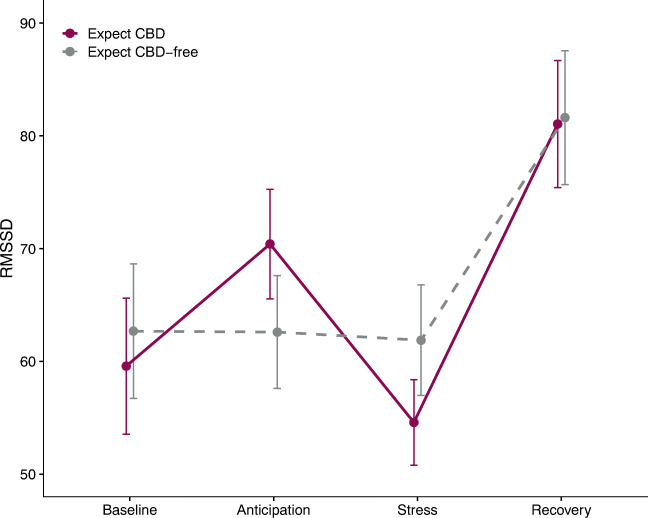Fig. 2.
Estimated marginal mean (± standard error) RMSSD, an index of heart rate variability, over Time by Expectancy condition. RMSSD is a measure of vagal tone, thus higher RMSSD is thought to represent more parasympathetic output. A decrease in RMSSD is thought to represent a greater physiological stress response. In the CBD expectancy condition, RMSSD changed sequentially over time, and was higher at recovery relative to baseline. In the CBD-free expectancy condition, RMSSD was lower during stress relative to recovery, and higher at recovery relative to baseline. RMSSD root mean square of successive differences. Baseline (T1): +00 − + 70; Anticipation (T2): +95; Stress (T3): +100; Recovery (T4): +110

